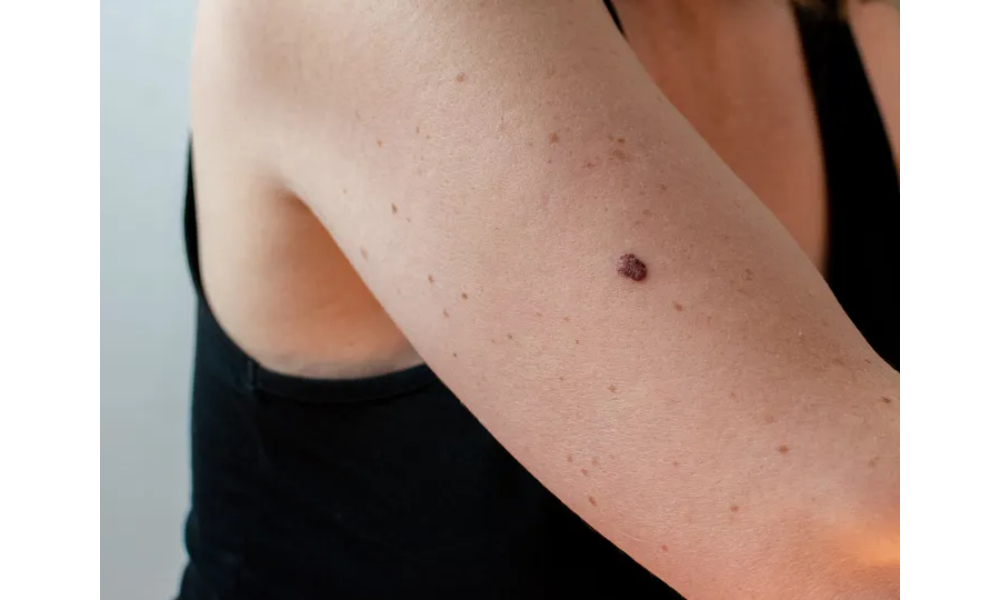Among the most often occurring forms of cancer worldwide is skin cancer. Skin cancer can strike everyone regardless of their age or complexion tone. The good news is that, should skin cancer be discovered early on, it is treatable. This is why one should be familiar with what appears like.
This book will enable you to recognize skin cancer symptoms.
Typical Telltale Signs of Skin Cancer
Usually the first indication of skin cancer is either a change in an existing area or a new one. It could seem like:
- An aching that never goes away
- A fresh growth
- A mole shifting in form, color, or size
- An area that is bleeding, crusty, or itchy?
Various forms of skin cancer might present differently.
Basal Cell Carcinoma (BCC)
Most often occurring form of skin cancer is this one. It spreads seldom and develops slowly. It could appear like:
- A tiny, pearly, or waxy bump
- A level, brown or flesh-colored scar-like patch
- An ailment that heals and resurfaces
BCC usually shows up on areas of the body like the face, neck, and arms that get lots of sunlight.
Squamous cell carcinoma, or SCC
Second most often occurring form of skin cancer is SCC. Ignorance of treatment will lead to spread. It may look like:
- A red or jagged patch
- A company, red bump
- A sore that bleeds or crusts
- An analogous development to a wart
Usually showing up on sun-exposed sites including the face, neck, ears, and hands is SCC.
Melanoma
Among skin cancers, melanoma is the most lethal one. Without early discovery, it can spread rapidly. It might develop from a current mole or show up as a fresh dark spot. Look for melanoma using the ABCDE rule:
- Half does not match the other in asymmetry.
- Border: The edges are uneven or jagged
- Color: The color isn’t the same all over (may be black, brown, red, or blue)
- Diameter: The spot is bigger than a pencil eraser (over 6 mm)
- Evolving: The mole is evolving in size, color, or shape
Melanoma can strike any part of the body, including those devoid of significant sunlight.
When Should I Visit a Doctor?
See a dermatologist or doctor if:
- You come onto an odd-looking area that seems to be shifting constantly.
- You’ve used tanning beds or suffered from severe sunburns.
- You count many freckles or moles.
- Your family runs with skin cancer.
- You have a sore that won’t go away.
Early skin cancer discovery can literally save your life.
Conclusion
Though the type determines how diverse skin cancer looks, it usually begins as a new or evolving lesion. Head to toe, routinely check your skin. See something that seems unusual; don’t wait; get it checked. Early detection provides you the best chance for successful therapy.
This post was written by a professional at Wall Dermatology. Wall Dermatology, led by Dr. Weston Wall, a fellowship-trained Mohs surgeon, is a premier dermatology practice dedicated to excellence in skin care. Born and raised in St. Petersburg, Dr. Wall is deeply committed to serving his community with expert medical, surgical, and cosmetic dermatology services. Specializing in skin cancer prevention, detection, and treatment, Wall Dermatology combines cutting-edge techniques with a compassionate, patient-first approach. With decades of experience, Dr. Wall and his skin cancer specialists St Petersburg FL prioritize personalized care, ensuring each patient feels valued and confident in their skin health. Trust Wall Dermatology for expert, compassionate, and comprehensive dermatologic care.


